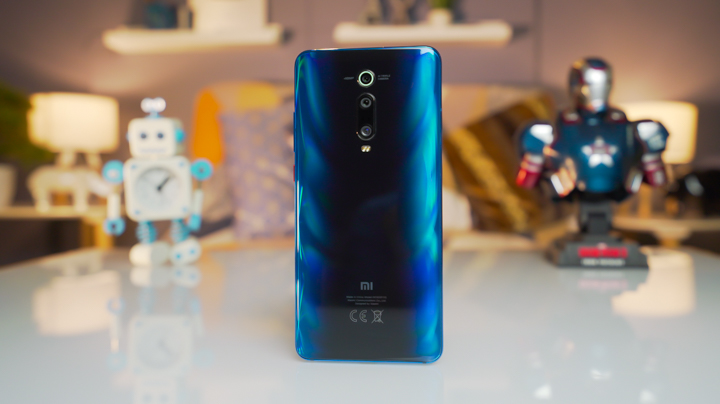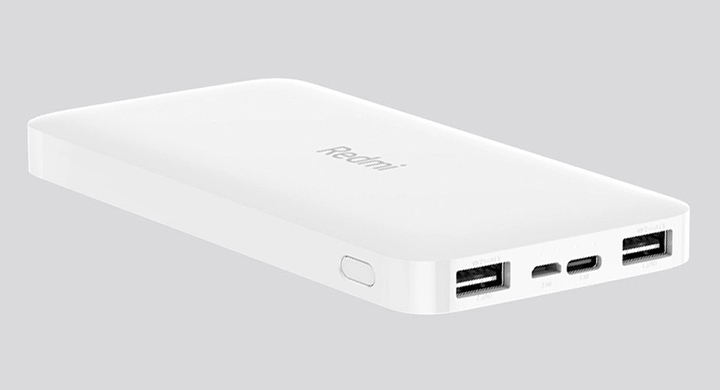The Christmas vacation is over for most universities, and it’s time to start preparing for your return to school. In this ever-advancing modern age of technology, there is no denying how much “tech” we use, or can use, in making our workflow more efficient. Not everyone is on board with this idea, though, as some students can go minimalist when it comes to devices they want to use. But in case you want to go all out, here are some recommendations.
Laptop or tablet

A laptop is essential, and a great alternative to desktops, especially if you want to get your schoolwork done anywhere on the campus. Choosing the right laptop comes down to your workflow needs and preferences. For the most part, students would be using laptops for basic productivity tasks such as writing reports, preparing presentations, or analyzing data on spreadsheets. Other tasks would include photo/video editing for projects depending on their program or organization. Alternatively, you can go for an Android or iPad OS-powered tablet for more essential tasks. You can also stick to Windows and get a 2-in-1 if you want the best of both worlds. There are different kinds of laptops in the market, and if you’re wondering which one is for you, you can read our guide here.
Smartphone

Smartphones are the most popular device people use today. We carry it everywhere and use it to engage in multiple activities outside of communication. Choosing the right smartphone today may seem like a very complicated process with all the different specs to compare, but for most, it usually boils down to price and user interface. We recommend going for the new mid-range devices as they perform well and don’t cost an arm and a leg. I’d also recommend a phone with a Type-C connector for reasons explained later, but mainly for future-proofing. If you’re stuck to iOS, I will hold out and wait for the future iPhone releases, which are rumored to shift to the Type-C interface finally.
Cables

Before we move on to specific devices, cable efficiency should be tackled as it may or may not play a significant role in the devices you may choose to get. Ideally, you want to carry as little cables as possible to reduce clutter in your bag, because we all know the pain of having to untangle different wires from each other. To reduce the number of cables you will need, my recommendation is to have most (if not all) of the devices you own use the same connector type. USB Type-C has the most versatility as the connector allows for charging of not only smaller devices, but also compatible laptops with Power Delivery.
If going full USB Type-C is not an option, like you have a device with a micro-USB or Lightning interface, then you can go for multi-USB cables to reduce clutter. If you’re looking for some quality cables, I would recommend getting cables from brands such as Anker, and for a more budget-friendly option, you can turn to brands such as Belkin, UGreen, Baseus or Tronsmart.
Power Adapters

Just like cables, it would also help to minimize the number of power adapters you may need. Having a single 15W or 18W power adapter should be sufficient to charge any of your devices. However, if you want to charge multiple devices at the same time, consider purchasing a power adapter with multiple USB ports and a higher wattage. Just be careful as some adapter with multiple ports will split wattage, and having multiple devices charge at the same time may end up being slower than charging them one at a time at full speed.
If you have a laptop that charges via Power Delivery, consider just using a single high wattage power adapter. If you have devices with a Type-C connector, you can use any Type-C to Type-C cable that supports up to 60W of charging to charge any of your devices at their full speed. iPhone users can also take advantage of up to 18W of fast charging with a compatible Lightning to Type-C cable, which is more than 3x faster charging than with the included cable and power adapter.
Power banks

Power banks, otherwise known as battery packs, is a must-have today after gaining popularity a few years back because sometimes we need to charge during our commute or while in class. 10,000mAh capacity is usually is the typical capacity and is more than enough for a single device. These are affordable and easy to carry, but if you’re planning to charge other devices, multiple devices, better opt for 20,000mAh capacities, which are bulkier and a bit more expensive.
Aside from capacity, also take note of other features such as the ports, fast charging support (Qualcomm Quick Charge, or PD charging), as well as wireless charging. The more features, the more expensive it could get, so pick the one that fits your needs.
USB Storage

Even in the age of cloud storage, USB storage options are still a popular option for file storage and file transfer. However, the issue I see people run into nowadays with their premium laptops is the lack of traditional USB-A ports. A dual-drive such as the Sandisk Ultra Dual Drive USB lets you use your device regardless if your computer uses regular Type-A ports or the modern Type-C ports. Additionally, if you have a smartphone using the Type-C connector, you can read, write, or transfer files using your smartphone as well. However, if you require higher storage capacities, you can go for external HDDs. But if you have a bigger budget, there are SSD-based options as well.
Backpacks

Your “tech bag” doesn’t have to be those with built-in power banks or solar panels. You just have to pick the appropriate bag that can accommodate all the things you have to carry daily. Aside from the devices mentioned above, it should be able to store items like books, pens, a water bottle, and an umbrella. Gadget bags are great starters as they have plenty of pockets, including one dedicated for your laptop. Ordinary backpacks are also fine, but we suggest getting an organizer if it doesn’t have plenty of pockets. We’d also recommend getting a waterproof bag, so you don’t have to worry about your tech getting wet should you get caught in the rain without an umbrella.
Optional Tech Devices
Wireless Earbuds

Wireless earbuds are a growing tech trend as their portability and truly wireless nature make them the perfect private audio choice. Like smartphones, they come in different price tags with some costing more than PHP 10K. But as college students, we recommend the budget-friendly ones like those from Xiaomi, Joyroom, Sabbat, Momax, Huawei, or Realme, as they only range from PHP 3K to 4K.
Wireless Bluetooth Speakers

Wireless Bluetooth speakers don’t have to be on this list as well, but some people enjoy listening to music in groups, and these devices do the job. Again, we don’t recommend splurging for more expensive speakers. Budget speakers offered by reputable brands like JBL and Sony for under PHP 3K should be more than enough. Again, you’re in school to study, not to party.
And that sums it up. Do you have tech recommendations for college students? Let us know in the comments below.
This article was contributed by Christian Magbitang with inputs and editing by Louie Diangson.
.lwrp.link-whisper-related-posts{ margin-top: 40px; margin-bottom: 30px; } .lwrp .lwrp-title{ }.lwrp .lwrp-description{ } .lwrp .lwrp-list-container{ } .lwrp .lwrp-list-multi-container{ display: flex; } .lwrp .lwrp-list-double{ width: 48%; } .lwrp .lwrp-list-triple{ width: 32%; } .lwrp .lwrp-list-row-container{ display: flex; justify-content: space-between; } .lwrp .lwrp-list-row-container .lwrp-list-item{ width: calc(25% - 20px); } .lwrp .lwrp-list-item:not(.lwrp-no-posts-message-item){ } .lwrp .lwrp-list-item img{ max-width: 100%; height: auto; object-fit: cover; aspect-ratio: 1 / 1; } .lwrp .lwrp-list-item.lwrp-empty-list-item{ background: initial !important; } .lwrp .lwrp-list-item .lwrp-list-link .lwrp-list-link-title-text, .lwrp .lwrp-list-item .lwrp-list-no-posts-message{ }@media screen and (max-width: 480px) { .lwrp.link-whisper-related-posts{ } .lwrp .lwrp-title{ }.lwrp .lwrp-description{ } .lwrp .lwrp-list-multi-container{ flex-direction: column; } .lwrp .lwrp-list-multi-container ul.lwrp-list{ margin-top: 0px; margin-bottom: 0px; padding-top: 0px; padding-bottom: 0px; } .lwrp .lwrp-list-double, .lwrp .lwrp-list-triple{ width: 100%; } .lwrp .lwrp-list-row-container{ justify-content: initial; flex-direction: column; } .lwrp .lwrp-list-row-container .lwrp-list-item{ width: 100%; } .lwrp .lwrp-list-item:not(.lwrp-no-posts-message-item){ } .lwrp .lwrp-list-item .lwrp-list-link .lwrp-list-link-title-text, .lwrp .lwrp-list-item .lwrp-list-no-posts-message{ }; }
ALex says:
thanks for article google